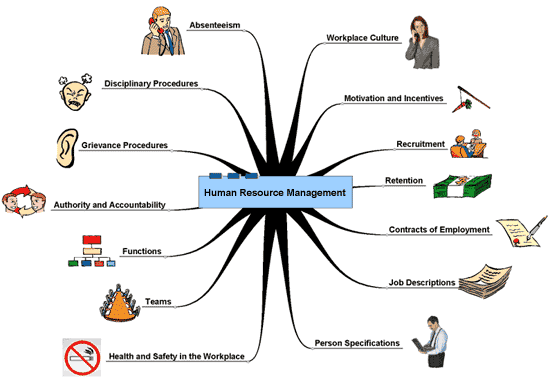HR Performance Issues and Motivation
“Do not discipline employees who are unable to perform a task. Discipline those who are able to perform a task, but are unwilling or unmotivated to succeed” – SANS Leadership and Management Competencies course book in HR performance.
Understanding HR performance and the motivations of employees in order to identify and correct performance issues is fundamental to effective Human Resource management. Because of this, there is a wealth of research related to understanding the underlying causes and effects of good and bad employee performance. The goal is to figure out where the problem originates and to develop ways to correct those problems.
HR performance and Motivation theories are abundant but all originate from the experts considered to be fathers of motivation theory; Maslow and Herzberg. Early motivation theorists like Abraham Maslow and Frederick Hertzberg, laid the foundation upon which modern motivation theory is built. Their work has guided research in this area of study since the late 1950’s and early 60’s (Hendriks, 1999).
Yet as the workplace has evolved and diversified over the last several decades, so have the perspectives on motivation theory. The foundation has remained the same, but the perspectives are changing and elaborating what was original hypothesized by Maslow and Herzberg.
Take for instance Maslow’s need hierarchy theory. Maslow theorized that human motivation is driven by five needs: the need for shelter or safety, food and water, love and respect, recognition and fulfillment. These needs are organized in a hierarchy based on basic needs and “higher-order” needs; food and shelter are basic needs, recognition, love, fulfillment and respect are higher-order needs (Hendriks, 1999).
Hertzberg, on the other hand, proposes just two categories in his motivational theory. Herzberg concludes that people are motivated by either extrinsic or intrinsic motives (Gagne’ & Deci, 2005). Mainly, this theory says that either a person is motivated because they like what they are doing, or, they are motivated based on the expectation that they will be rewarded in some way for the work they are doing, this is key to promote good HR performance.
Both theories suggest that employee satisfaction is important to motivation and that in order to keep employees motivated, their needs must continue to be satisfied. Maslow’s theory falls short of prescriptive answers to questions of employee motivation, whereas Hertzberg suggests that employers can maintain employee satisfaction by considering the intrinsic and extrinsic motives of their employees when adopting rewards incentives and HR performance (Davoren, n.d.).
While Maslow and Herzberg’s theories in their broader applications have become less applicable as the workforce and workplace has changed, the fundamental basis of these theories is still sound and relevant to current motivational and HR performance theory.
Among some of the more recent expansions on motivation theory include the Commitment and Necessary Effort (CANE) motivation Model, Self-Determination Theory (SDT) and the Cognitive Evaluation Theory (CET). Motivation theory has been applied to understanding motivation in many different areas, including in sports, academic achievement and business. These theories applied in business can help solve HR performance issues and improve employee motivation.
The CANE motivation model tries to incorporate the many different aspects of motivation theory. It takes the best approaches of modern research, and combines them into one all-encompassing theory that can be used to understand the motivations of professionals with knowledge based jobs (Clark, 1998). These types of jobs, white collar jobs that require some expertise and professional knowledge, usually involve incentives for attracting highly educated professionals. Understanding the interaction of rewards systems and motivators that guide those professionals is very important for HR recruitment.
Clark argues that some strategies in the area of organizational development overestimate the effect that employee incentives like contests and performance recognition have on employee motivation (Clark, 1998). These strategies are widely used as a means to increase worker productivity. However, some research studies have suggested that studies that show that these strategies work to improve motivation are “fatally flawed” and that these strategies may not have as much power to influence employee behavior as previously thought (Clark, 1998).
The CANE Model says that motivation and HR performance is two-pronged and intertwined. First, motivation is based on commitment to a goal. The second is the amount of effort that goes into achieving that goal (Clark, 1998). If an employee is motivated by a commitment to achieving their goal, he or she will remain focused on that goal even if they are tempted to focus on other less important goals. Once that level of commitment is achieved, the effort needed to achieve the goal, or the “Necessary Effort”, will sustain the motivation to complete the task. If the task is perceived as important, then the necessary effort to complete the task is tied to its importance.
Though Maslow and Herzberg’s theories are becoming outdated, the CANE Model falls short of unifying motivation theory into one model because of its limitations in broad application. It is too broad to explain the nuance effects that culture and diversity have on individual definitions of commitment, effectiveness and control (Clark, 1998). Not to mention that broad solutions to problems of motivation in the workplace can only be identified by this model; applying those solutions to specific job performances is more difficult and requires more specialized solutions.
Self-Determination Theory has evolved not only through theoretical analysis but has also held up in empirical studies. SDT relies heavily on needs based theory, but the needs are more psychological in nature. Satisfying these psychological needs, according to Self-Determination Theory, motivates behavior and also elucidates the processes that direct action (Gagne’ & Deci, 2005).
In this theory, by determining underlying psychological needs, employers can appeal to the intrinsic motivations of employees to correct performance issues and to increase motivation. Intrinsic motivation is driven by internal satisfaction. This involves the motivation that comes from being engaged in an activity that brings personal satisfaction. It is unrelated to any material reward. An employee is motivated by a psychological need to be challenged or to feel a sense of accomplishment (Ryan & Deci, 2000).
Since all behaviors are at their core driven psychologically, research in the area of Self-Determination Theory has tried to discern which of these psychological needs are being fulfilled by intrinsic motivation. What has been concluded is that intrinsic motivation can be encouraged and facilitated by environment since intrinsic motivation is not caused but rather “catalyzed” into action when the conditions are right (Ryan & Deci, 2000).”

Lastly, Cognitive Evaluation Theory (CET) which is one aspect of Self-Determination Theory finds that intrinsic motivation can be produced by offering encouragement and feedback that satisfies a sense of accomplishment and competence in employees (Ryan & Deci, 2000). This can be done using rewards for achievement; a bonus for timely turnaround or for reaching a sales goal. But employees can also be intrinsically motivated by words of encouragement that satisfy the same psychological need for feeling competent; a pat on the back or a ‘good job’ goes a long way.
Work performance is directly affected by job satisfaction and motivation. The work performance is the outcome. When working from the intrinsic motivation model, appealing to the internal psychological needs of employees can increase job satisfaction, which in turn sparks motivation and finally produces an improved work performance. Understanding the means to increase job satisfaction is the crux of resolving performance issues and positively motivating employees.
Solutions to performance issues should be evaluated at all levels. Just because an employee is not performing satisfactorily doesn’t mean that the problem lies with the employee. Sometimes, the problem is in management style or a lack of resources to do the job right. These things can exacerbate poor performances when the employee feels that they are not being given the proper tools to complete their job or receiving the necessary feedback to do the job correctly (Lister, n.d.). By simply rewarding exceptional behavior or providing constructive feedback for poor performance, an employer can improve job satisfaction and thereby resolve performance issues.
Therefore, assessing the needs of the group can allow employers to predict how those assessments will effect “job satisfaction and work outcome” (Gagne’ & Deci, 2005). Also, evaluating the types of needs that are being satisfied can affect job satisfaction and outcome. Herzberg presents two different factors in employee motivation. There are hygiene factors, the more superficial needs, and the motivation factors, which include more intrinsic motives.
Among hygiene factors that Herzberg identified are things like salary and work conditions. Motivation factors on the other hand, include things like personal achievement, opportunities for promotion, and a sense of responsibility (Hendriks, 1999). These factors have a direct and indirect effect on job satisfaction and performance. Hygiene factors according to Herzberg’s theory mostly affect motivation in a negative way; by the very absence of things like good working conditions and status, job satisfaction is decreased (Hendriks, 1999).
Consider a garbage man whose job performance has gone down. His work has slowed and he seems clearly dissatisfied with his job. Upon evaluation, HR has discovered that the employee is dissatisfied with his salary. He has been on the job for several years without promotion and without pay increases. According to both Maslow and Herzberg’s theories of motivation, his job dissatisfaction is rooted in one of his intrinsic and basic needs not being met; salary, food and shelter.
But further analysis supports Herzberg’s theory that there is a second prong to this employee’s dissatisfaction and poor HR performance. He has not received a promotion, which is more than mere dissatisfaction with his salary; it implies that he is dissatisfied because he is not receiving the recognition that he feels that he deserves for the time and commitment he has given to his employer. By not relating to the psychological need for recognition, which has its own intrinsic reward for the employee, the employer is partly to blame for the performance issue and lack of motivation.
To resolve any HR performance problem, the employer must first identify the causes of the problem and then seek to improve job satisfaction through proper motivation. In this scenario, showing that management cares about his input and recognizes his many years of contribution by giving him a raise or a new promotion or job title, can help to resolve those performance issues by appealing to the intrinsic and extrinsic motivations of the employee.
Works Cited
Bong, K. (n.d. ). HR Performance Management Laboratory.
Clark, R. E. (1998). Motivating HR Performance – Diagnosing and Solving Motivation Problems. Performance Improvement. Los Angeles: University of Southern California.
Davoren, J. (n.d.). What Types of Rewards Would Motivate Workers in an Organization?
Gagne’, M., & Deci, E. L. (2005). Self-determination theory and work. Journal of Organizational Behavior, 331-362.
Hendriks, P. (1999). Why Share Knowledge and HR Performance? The Influence of ICT on the Motivation for Knowledge Sharing. Knowledge and Process Management , 91-100.
Lister, J. (n.d.). Examples of a Motivational and HR Performance Issues in an Organization.
Pintrich, P. R. (2000). An Achievement Goal Theory Perspective on Issues in HR Performance and Motivation Terminology, Theory, and Research. Contemporary Educational Psychology, 92-104.
Ryan, R. M., & Deci, E. L. (2000). Intrinsic and Extrinsic Motivations: Classic Definitions and New Directions of HR Performance. Contemporary Educational Psychology, 54-67.





